
A Dimensional Consistency Aware Time Domain Analysis of the Generic Fractional Order Biquadratic System (2022)
Title : A Dimensional Consistency Aware Time Domain Analysis of the Generic Fractional Order Biquadratic System
Researcher : Banchuin, R. and Roungsan Chaisricharoen
Department : Faculty of Engineering & Graduated School of IT, Siam University, Bangkok, Thailand
Email : rawid.ban@siam.edu
Abstract : In this research, the time domain analysis of the fractional order biquadratic system with nonzero input and nonzero damping ratio has been performed. Unlike the previous works, the analysis has been generically done with dimensional consistency awareness without referring to any specific physical system where nonzero input and nonzero damping ratio have been allowed. The fractional differential equation of the system has been derived and analytically solved. The physical measurability of the dimensions of the fractional derivative terms which have been defined in Caputo sense, and response with significantly different dynamic from its dimensional consistency ignored counterpart have been obtained due to our dimensional consistency awareness. The resulting solution is applicable to the fractional biquadratic systems of any kind with any physical nature. Based on such solution and numerical simulations, the influence of the fractional order parameter to all major time domain parameters have been studied in detailed. The obtain results provide insight to the fractional order biquadratic system with dimensional consistency awareness in a generic point of view.
Keywords: fractional order biquadratic system, fractional differential equation, fractional time component parameter, dimensional consistency, time domain analysis
Link to article : Journal of Mobile Multimedia, 2022, Vol. 18 No.3, pp. 789–806. https://doi.org/10.13052/jmm1550-4646.18316
Journal : Journal of Mobile Multimedia / in Scopus
Citation : Banchuin, R., & Chaisricharoen R. (2022). A dimensional consistency aware time domain analysis of the generic fractional order biquadratic system. Journal of Mobile Multimedia, 18(3), 789–806. https://doi.org/10.13052/jmm1550-4646.18316
ฐานข้อมูลงานวิจัย มหาวิทยาลัยสยาม : https://e-research.siam.edu/kb/a-dimensional-consistency/

A Pilot Study of 0.4% Povidone-Iodine Nasal Spray to Eradicate SARS-CoV-2 in the Nasopharynx (2022)
Title : A Pilot Study of 0.4% Povidone-Iodine Nasal Spray to Eradicate SARS-CoV-2 in the Nasopharynx
Researcher : Sirijatuphat, R.,1 Leelarasamee, A.,1,2 Puangpet, T.,3 Thitithanyanont, A.4
Department : 1Department of Medicine, Faculty of Medicine Siriraj Hospital, Mahidol University, Bangkok, Thailand; 2Faculty of Medicine, Siam University, Bangkok, Thailand; 3Samut Sakhon Hospital, Samut Sakhon, Thailand; 4Department of Microbiology, Faculty of Science, Mahidol University, Bangkok, Thailand
Abstract : Purpose: This study aimed to evaluate the virucidal efficacy of 0.4% povidone-iodine (PVP-I) nasal spray against SARS-CoV-2 in the patients’ nasopharynx at 3 minutes and 4 hours after PVP-I exposure.
Patients and Methods: The study was an open-label, before and after design, single-arm pilot study of adult patients with RT-PCR-confirmed COVID-19 within 24 hours. All patients received three puffs of 0.4% PVP-I nasal spray in each nostril. Nasopharyngeal (NP) swabs were collected before the PVP-I spray (baseline, left NP samples), and at 3 minutes (left and right NP samples) and 4 hours post-PVP-I spray (right NP samples). All swabs were coded to blind assessors and transported to diagnostic laboratory and tested by RT-PCR and cultured to measure the viable SARS-CoV-2 within 24 hours after collection.
Results: Fourteen patients were enrolled but viable SARS-CoV-2 was cultured from 12 patients (85.7%). The median viral titer at baseline was 3.5 log TCID50/mL (IQR 2.8– 4.0 log TCID50/mL). At 3 minutes post-PVP-I spray via the left nostril, viral titers were reduced in 8 patients (66.7%). At 3 minutes post-PVP-I, the median viral titer was 3.4 log TCID50/mL (IQR 1.8– 4.4 log TCID50/mL) (P=0.162). At 4 hours post-PVP-I spray via the right nostril, 6 of 11 patients (54.5%) had either the same or minimal change in viral titers. The median viral titer 3 minutes post-PVP-I spray was 2.7 log TCID50/mL (IQR 2.0– 3.9 log TCID50/mL). Four hours post-PVP-I spray the median titer was 2.8 log TCID50/mL (IQR 2.2– 3.9 log TCID50/mL) (P=0.704). No adverse effects of 0.4% PVP-I nasal spray were detected.
Conclusion: The 0.4% PVP-I nasal spray demonstrated minimal virucidal efficacy at 3 minutes post-exposure. At 4 hours post-exposure, the viral titer was considerably unchanged from baseline in 10 cases. The 0.4% PVP-I nasal spray showed poor virucidal activity and is unlikely to reduce transmission of SARS-CoV-2 in prophylaxis use.
Keywords: povidone iodine, COVID-19, SARS-CoV-2, viral eradication, viral culture, nasopharyngeal swab
Link to Academic article: DOI https://doi.org/10.2147/IDR.S391630
Journal : Infection and Drug Resistance, 2022, 15.
Bibliography : Sirijatuphat, R., Leelarasamee, A., Puangpet, T., & Thitithanyanont, A. (2022). A Pilot Study of 0.4% Povidone-Iodine Nasal Spray to Eradicate SARS-CoV-2 in the Nasopharynx. Infection and Drug Resistance, 15, 7529–7536.
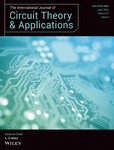
Analytical model of inverse memelement with fractional order kinetic (2022)
Title : Analytical model of inverse memelement with fractional order kinetic
Researcher : Banchuin, R.
Department : Faculty of Engineering & Graduated School of IT, Siam University, Bangkok, Thailand
Email : rawid.ban@siam.edu
Abstract : In this work, the analytical model of inverse memelement with fractional order kinetic has been proposed. The classical yet noncontroversial Caputo fractional derivative has been adopted for modeling such fractional order kinetic due to its simplicity yet accuracy. Based on the proposed model, the analysis of fractional order kinetic inverse memristor has been thoroughly performed where both nonperiodic and periodic excitations have been considered. Analytical formulations of the related parameters, for example, the rate of changes of inverse memristance, area of inverse memristance loop, and area of pinched hysteresis loop, and so on, have been performed. The extension of the proposed model to the fractional inverse memelement has been performed where the fractional inverse memristor has been analyzed. We have found that the inverse memristor still behaves in an opposite manner to the memristor even with the fractional order kinetic. All obtained results have been found to be intuitively applicable to any inverse memelement. The equivalent circuit models of both fractional inverse memristor and fractional inverse memelement have also been presented. This work provides a comprehensive understanding on both inverse memelement with fractional order kinetic and fractional inverse memelement. The realization of the emulator of such inverse memelement with fractional order kinetic and the fractional inverse memelement emulator has been found to be interesting opened research questions.
Link to article : International Journal of Circuit Theory and Applications, 2022, 50(7), pp. 2342–2377. https://doi.org/10.1002/cta.3264
Journal : International Journal of Circuit Theory and Applications / in Scopus
Bibliography : Banchuin, R. (2022). Analytical model of inverse memelement with fractional order kinetic. International Journal of Circuit Theory and applications, 50(7), 2342-2377. https://doi.org/10.1002/cta.3264
ฐานข้อมูลงานวิจัย มหาวิทยาลัยสยาม : https://e-research.siam.edu/kb/analytical-model-of-inverse/
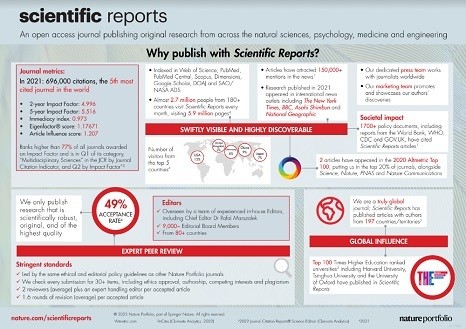
Citrate pharmacokinetics in critically ill liver failure patients receiving CRRT (2022)
Title : Citrate pharmacokinetics in critically ill liver failure patients receiving CRRT
Researcher : Thanapongsatorn, P., Chaijamorn, W.,[mfn]1[/mfn] Sirivongrangson, P., …Lucksiri, A., Srisawat, N.
Department : 1Faculty of Medicine, Siam University, Bangkok, Thailand
Abstract : Citrate has been proposed as anticoagulation of choice in continuous renal replacement therapy (CRRT). However, little is known about the pharmacokinetics (PK) and metabolism of citrate in liver failure patients who require CRRT with regional citrate anticoagulation (RCA). This prospective clinical PK study was conducted at King Chulalongkorn Memorial Hospital between July 2019 to April 2021, evaluating seven acute liver failure (ALF) and seven acute-on-chronic liver failure (ACLF) patients who received CRRT support utilizing RCA as an anticoagulant at a citrate dose of 3 mmol/L. For evaluation of the citrate PK, we delivered citrate for 120 min and then stopped for a further 120 min. Total body clearance of citrate was 152.5 ± 50.9 and 195.6 ± 174.3 mL/min in ALF and ACLF, respectively. The ionized calcium, ionized magnesium, and pH slightly decreased after starting citrate infusion and gradually increased to baseline after stopping citrate infusion. Two of the ACLF patients displayed citrate toxicity during citrate infusion, while, no ALF patient had citrate toxicity. In summary, citrate clearance was significantly decreased in critically ill ALF and ACLF patients receiving CRRT. Citrate use as an anticoagulation in these patients is of concern for the risk of citrate toxicity.
Link to Academic article: https://www.nature.com/articles/s41598-022-05867-8
Journal : Scientific Reports,
Bibliography : Thanapongsatorn, P., Chaijamorn, W., Sirivongrangson, P., Tachaboon, S., Peerapornratana, S., Lumlertgul, N.,…Srisawat, N. (2022). Citrate pharmacokinetics in critically ill liver failure patients receiving CRRT. Scientific Reports, 12(1), 1815.

Comparative analyses of electrical circuits with conventional and revisited definitions of circuit elements: a fractional conformable calculus approach (2022)
Title : Comparative analyses of electrical circuits with conventional and revisited definitions of circuit elements: a fractional conformable calculus approach
Researcher : Banchuin, R.
Department : Faculty of Engineering, & Graduated School of IT, Siam University, Bangkok, Thailand
Email : rawid.ban@siam.edu
Abstract :
Purpose
Design/methodology/approach
Findings
Originality/value
Link to article : COMPEL – The International Journal for Computation and Mathematics in Electrical and Electronic Engineering, 2022, 41(1), pp. 258-282. https://doi.org/10.1108/COMPEL-03-2021-0079
Journal : COMPEL – The International Journal for Computation and Mathematics in Electrical and Electronic Engineering / in Scopus
Citation: Banchuin, R. (2022). Comparative analyses of electrical circuits with conventional and revisited definitions of circuit elements: A fractional conformable calculus approach. COMPEL – The International Journal for Computation and Mathematics in Electrical and Electronic Engineering, 41(1), 258-282. https://doi.org/10.1108/COMPEL-03-2021-0079
ฐานข้อมูลงานวิจัย มหาวิทยาลัยสยาม : https://e-research.siam.edu/kb/comparative-analyses-of-electrical-circuits/

Comparative analysis of suitability of fractional derivatives in modelling the practical capacitor (2022)
Title : Comparative analysis of suitability of fractional derivatives in modelling the practical capacitor
Researcher : Banchuin, R.
Department : Faculty of Engineering, & Graduated School of IT, Siam University, Bangkok, Thailand
Email : rawid.ban@siam.edu
Abstract :
Purpose
Design/methodology/approach
Findings
Originality/value
Link to article : COMPEL – The International Journal for Computation and Mathematics in Electrical and Electronic Engineering, 2022, 41(1), 304-318. https://doi.org/10.1108/COMPEL-08-2021-0293
Journal : COMPEL – The International Journal for Computation and Mathematics in Electrical and Electronic Engineering / in Scopus
Citation : Banchuin, R. (2022). Comparative analysis of suitability of fractional derivatives in modelling the practical capacitor. COMPEL – The International Journal for Computation and Mathematics in Electrical and Electronic Engineering, 41(1), 304-318. https://doi.org/10.1108/COMPEL-08-2021-0293
ฐานข้อมูลงานวิจัย มหาวิทยาลัยสยาม : https://e-research.siam.edu/kb/comparative-analysis-of-suitability/

Comparison between Penetration Forces for a 25-Gauge Cannula to Perforate an Artery at 45-Degree and 90-Degree Angles (2022)
Title : Comparison between Penetration Forces for a 25-Gauge Cannula to Perforate an Artery at 45-Degree and 90-Degree Angles
Researcher : Tansatit, T., Uruwan, S., Rungsawang, C.
Abstract : A cannula facilitates wide injections and deviates arteries.1,2 Previous studies measured cannula penetration force regardless of angle.3,4 We measured the penetration force of a cannula at two different angles in three arterial segments.
Ten facial arteries from five soft embalmed cadavers, aged 45 to 63 years, were tested at the mandibular body, oral commissure, and lower ala. Both segmental ends were grabbed. A 25-gauge cannula attached to a force gauge pierced the arterial wall at 45 and 90 degrees. In addition, the bifurcation of the artery at the superior labial artery was tested.
Link to Academic article: DOI: 10.1097/PRS.0000000000009722
Journal :Plastic and Reconstructive Surgery, 2022, 150(6),/ in Scopus
Citation : Tansatit, T., Uruwan, S., & Rungsawang, C. (2022). Comparison between Penetration Forces for a 25-Gauge Cannula to Perforate an Artery at 45-Degree and 90-Degree Angles. Plastic and Reconstructive Surgery,150(6), 1358E–1360E. DOI: 10.1097/PRS.0000000000009722
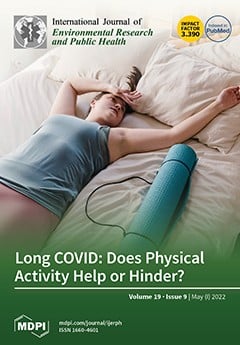
Construction of the Short-Form Thai-Home Fall Hazard Assessment Tool (Thai-HFHAT-SF) and Testing Its Validity and Reliability in the Elderly (2022)
Title : Construction of the Short-Form Thai-Home Fall Hazard Assessment Tool (Thai-HFHAT-SF) and Testing Its Validity and Reliability in the Elderly
Researcher : Charupa Lektip, Sarawut Lapmanee, Rewwadee Petsirasan, Kanda Chaipinyo, Saifon Lektip, and Jiraphat Nawarat.
Department : Faculty of Medicine, Siam University, Bangkok, Thailand
E-mail : sarawut.lap@siam.ed
Link to article : International Journal of Environmental Research and Public Health, 2022,19(9), 5187. https://doi.org/10.3390/ijerph19095187
Citation : Lektip, C., Lapmanee, S., Petsirasan, R., Chaipinyo, K., Lektip, S., & Nawarat, J. (2022). Construction of the Short-Form Thai-Home Fall Hazard Assessment Tool (Thai-HFHAT-SF) and Testing Its Validity and Reliability in the Elderly. International Journal of Environmental Research and Public Health, 19(9), 5187. https://doi.org/10.3390/ijerph19095187
Journal : International Journal of Environmental Research and Public Health / in Scopus
ฐานข้อมูลงานวิจัย มหาวิทยาลัยสยาม : –
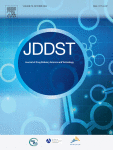
Designing electrospun shellac nanofibers with mupirocin using the Box-Behnken approach for topical wound care (2022)
Title : Designing electrospun shellac nanofibers with mupirocin using the Box-Behnken approach for topical wound care
Researcher : Nawinda Chinatangkul, Sirikarn Pengon,Wantanwa Krongrawa, Siraprapa Chansatidkosol, Chutima Limmatvapirat and Sontaya Limmatvapirat
Link to article: Journal of Drug Delivery Science and Technology, Volume 76, Issue 103720, 31 August 2022, Pages 1-8. https://doi.org/10.1016/j.jddst.2022.103720
Citation : Chinatangkul N., Pengon S., Chatsuwan T., Krongrawa W., Chansatidkosol S., Limmatvapirat C. and Limmatvapirat S. (2022). Designing electrospun shellac nanofibers with mupirocin using the Box-Behnken approach for topical wound care. Journal of Drug Delivery Science and Technology, 76(103720), 1-8. https://doi.org/10.1016/j.jddst.2022.103720
Journal : Journal of Drug Delivery Science and Technology / in Scopus
ฐานข้อมูลงานวิจัย มหาวิทยาลัยสยาม : https://e-research.siam.edu/kb/designing-electrospun-shellac/
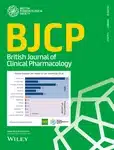
Effects of pharmacist interventions on cardiovascular risk factors and outcomes: An umbrella review of meta-analysis of randomized controlled trials (2022)
Title : Effects of pharmacist interventions on cardiovascular risk factors and outcomes: An umbrella review of meta-analysis of randomized controlled trials
Researcher : Rattanavipanon, W., Chaiyasothi, T., Puchsaka, P., …Veettil, S.K., Chaiyakunapruk, N.
Abstract : Aims
To grade the evidence from published meta-analyses of randomized controlled trials (RCTs) that assessed effects of pharmacist intervention on cardiovascular risk factors and cardiovascular outcomes.
Methods
MEDLINE, Embase, and the Cochrane Library were searched from database inception to July 2021. Meta-analyses of RCTs were eligible. Quality of evidence were assessed by GRADE approach.
Results
From 9308 publications, 149 full-text articles were evaluated for eligibility, and 24 studies with 85 unique meta-analyses that assessed effects of pharmacist intervention on cardiovascular risk factors and cardiovascular outcomes were selected. Overall, 71.7% (61/85) of unique meta-analyses showed significant impacts of pharmacist intervention. For the quality of evidence, 63.4% of meta-analyses had large heterogeneity (I2 > 50%) while 1.2, 16.5, 32.9 and 49.4% of meta-analyses were graded as high, moderate, low and very low quality based on GRADE approach, respectively. Among meta-analyses with moderate quality, pharmacist interventions significantly mitigated risk factors (including 6/3 mmHg reduction of blood pressure, increased the rate of lipid control, glucose control and smoking cessation (pooled odds ratio, [95% confidence interval] 1.91 [1.55, 2.35], 3.11 [2.3, 4.3] and 2.3 [1.33, 3.97], respectively) and improved medication adherence (1.67 [1.38, 2.02]). Furthermore, pharmacist interventions significantly reduced all-cause mortality (0.72 [0.58, 0.89]) and improved quality of life in patients suffering from chronic heart failure.
Conclusion
This umbrella review found convincing evidence that pharmacist intervention can provide a wide range of benefits in cardiovascular disease management, ranging from risk factor control, improvement in medication adherence and, in some settings, reduction in morbidity and mortality.
Link to article: https://doi.org/10.1111/bcp.15279
Journal : British Journal of Clinical Pharmacology, 2022
Bibliography : Rattanavipanon, W., Chaiyasothi, T., Puchsaka, P., Mungkornkaew, R., Nathisuwan, S., Veettil, S. K. & Chaiyakunapruk, N.(2022). Effects of pharmacist interventions on cardiovascular risk factors and outcomes: An umbrella review of meta-analysis of randomized controlled trials. British Journal of Clinical Pharmacology, 88(7), 064–3077. https://doi.org/10.1111/bcp.15279